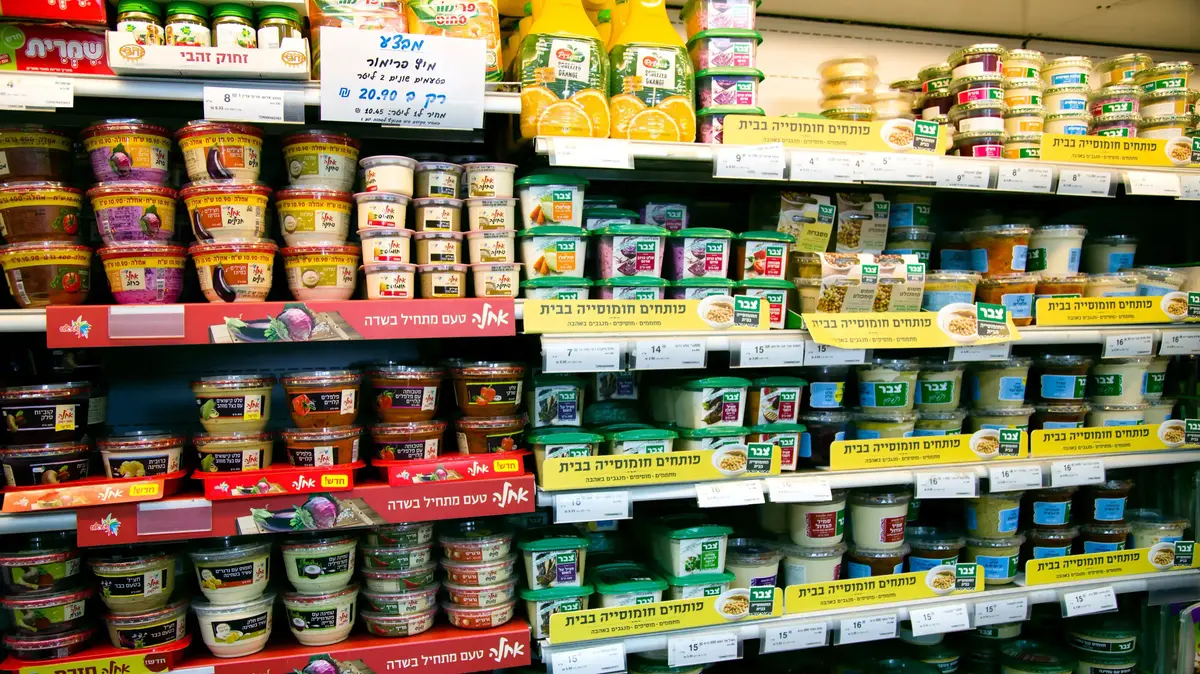Why are food prices in Israel the highest in the world? Here are many of the answers (Photo: ShutterStock)
The consumer goods market in Israel shows continuous price increases, beyond the usual fluctuations in the economy, reports of price increases in overseas countries, reported by manufacturers and importers, are only partially correct. But even when they are accurate, it is worth remembering that in most of Israel's reference countries, the prices of food and consumer goods are low, sometimes by gaps of tens or even hundreds of percent.
Another important thing to understand is that retailers have no real interest in stopping rising prices: chain profits are a derivative of the business cycle – and the more money we buy, the more the chains earn.
In other words, even when they initiate promotions, it is mainly to beat the competition, but not to reduce the purchase amount for us at the checkout (i.e., to attract us with discounts in a certain department and "sting" the next product). In other words, retailers are partners of manufacturers and importers in the desire for price increases.
They are partners, by the way, in more ways than one, since the large manufacturers are also the ones behind the chains' private labels, the ones that are ostensibly supposed to reduce the cost of the shopping basket.
Israel's largest manufacturers of consumer goods (Photo: Daniel Malachowsky)
Power in consumers
Stornext's consumer goods market index data clearly shows how much the prices of consumer goods have risen and, no less important, what share the giant manufacturers take up of the market. If we have to draw a conclusion from the report, before we go into the details, it is that the only ones who can stop the price increases are only us, the consumers.
Here's an example to illustrate how much we're hurting our consumer interest. Despite the price increases, the consumer goods market has seen a 5.8% increase in sales over the past year. There are fluctuations from manufacturer to manufacturer, but the bottom line is that more shekels went into the manufacturers' coffers – and not because we bought more, but because of the increase in prices.
In April alone, apparently due to social tensions and the economic concern accompanying the legal legislation, sales fell by 2.1%.
Reports of price increases in the media lead shoppers to be more vigilant, but the data shows that we can be savvy consumers mainly in the short term and focus on only one product at a time, such as pasta or tuna, which have been at the forefront of the battle against price increases over the past year (while paying more for other products, of course).
In defense of manufacturers (which are based on imported raw materials) and importers, it can be said that the dollar exchange rate increased by 4.43 percent in the past year (as of the date of publication of the data), but none of them bothered to give us discounts when the trend was reversed, and the shekel strengthened against a basket of currencies.
Moreover, freight and freight prices, which were at the top of the explanations for last year's price increases, fell sharply, but no one offered us discounts.
In other words, after deducting from the explanations the price increases all the nice words such as "we were forced" (to raise the price), "we absorbed" (the increase in the price of inputs), and more, it turns out that what fuels the price increases is mainly greed: the desire to derive another coupon at the expense of the Israeli consumer, far beyond what is customary in other countries.
More in Walla!
Shahal's TripleSafe - 3 life-saving devices, and now one as a gift
Presented by Shahal
Prominent brands under the Tnuva Group (Photo: Daniel Malakhovsky)
What is the market share of manufacturers?
Tnuva, one of Israel's largest food manufacturers, accounts for 11.1% of total sales in the consumer goods market and shows an increase of 6.60% in sales volume this year, all before the recent price increases.
Strauss's major competitors have also bounced back in a big way despite a crisis in salmona in chocolate at the Strauss-Elite factory, and are showing an increase of 2.7% in sales.
Where can the power of the consumer be identified? According to data from Unilever, which has shown, since the beginning of the year, a decline of about 9% in sales. An amazing statistic that shows the connection between consumer awareness and what is happening at the box office.
Shufersal and its sub-chains. In the case of the network, the public can know that all the sub-networks are under the same company (Photo: Daniel Malachowsky)
The whole world suffers from centralization
If Misha thinks we've invented something about concentration in the food market, it's by mistake. This is a global phenomenon in which large corporations prey on small manufacturers in order to dominate the market.
The consumer goods market (FMCG) is divided into two main groups, B2B manufacturing and marketing companies and C2B retail companies, with which manufacturing companies we, the consumers, do not have a direct interface, but in the form of consumer loyalty to brands. Our interface is mainly with the retail chains that are the platform for displaying and selling the various brands.
A veteran retailer shared with us his philosophy: "I just rent display space, shelves and refrigerators to the big manufacturers to sell their products, I mediate between the manufacturer and the consumer" This sentence has tremendous significance for understanding the issue of the cost of living. Because retailers are not only intermediaries, but also those who ultimately set prices: their power is greater than the power of any manufacturer.
Back to us, the consumers. We have seen in the past what happened to retail chains that were boycotted by consumers. We have all dealt with the boycott declared by the ultra-Orthodox on Angel Bakery, but this boycott takes us back 15 years: In 2008, the ultra-Orthodox sector decided to boycott the Shefa Shuk chain, the sub-chain of the Mega chain, which was the significant swallow in organized marketing to the haredi sector. The reason for the boycott was due to the activity of another sub-network within the group, which also operated on Saturdays.
That boycott severely damaged the network, and even a year after its removal, it could not be revived. Although this example relates specifically to the ultra-Orthodox and organized consumer public, it shows how much power the consumer has.
In Israel today there are more than a thousand different retailers (ostensibly), but most of the sales amount to a limited number of companies that control the commercial space and launch shares, similar to what happens with the manufacturers.
Despite the surge in consumption of products under private labels, we recognize that large and medium-sized manufacturers have also begun to produce private labels for large retailers, in order not to lose market share to small manufacturers and lose control of the market.
This turnaround creates a problem in itself in the manufacturer-retailer interface, because if yesterday a retailer could tell that manufacturer that he does not purchase from him or does not approve a price increase from him, now he may be harmed by the manufacturer in his private label...
Despite the concentration, consumers do not associate retail chain brands with the large manufacturers, and so, on the contrary, when consumers protest against the big players, they only benefit as a result of the surge in sales of private labels (which they also produce).
This confusion exists not only for large manufacturers, but also for retail chains. To maximize profits, many of these have developed sub-brands of "pseudo-competing" chains that specialize in marketing to targeted audiences. In this way, they can also differentiate the price lists and promotions according to the sales channels, we identify significant price gaps between the sub-chains of the large chains, which can reach 20%.
In the field of manufacturers and marketers, we see that there are a limited number of significant manufacturers, half of which account for the majority of sales in the consumer goods market. The wide range of brands held by each manufacturer certainly manages to confuse the consumer.
A thriving industry is every country's dream, but the adjustment of consumer goods prices to the level of income and standard of living must be calculated accordingly – and of course in relation to advanced countries of the world. Because despite Zionism, it seems that in recent years competition has opened up for the hearts of the educated and productive Israeli public from other countries.
Electra. A retail giant that controls several sub-brands (Photo: Daniel Malachowsky)
The takeover of private labels by the large manufacturers and the takeover of various marketing chains by a limited number of players lead to a lack of motivation on the part of the large and influential players to fight the cost of living.
Paz and the retail sector. Most of us know it as a fuel and energy company, but look at how many networks operate under the group (Photo: Daniel Malachowsky)
Since it is difficult to assume that manufacturers, importers or retailers will be willing to cut their considerable profit percentages (as evidenced by the entry of large companies from other fields into the retail market) from their narrowness, the time has come to transfer the initiative to the consumer. But in order to do so, we must know the map of concentration and the interests of each group: both in the various brands and in the sub-chains that sell us consumer products.
- money
- Consumerism
Tags
- supermarket
- Cost of Living
- Food manufacturers
- Retail
- Come









